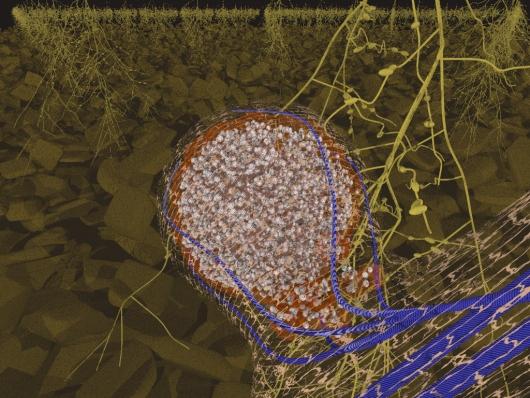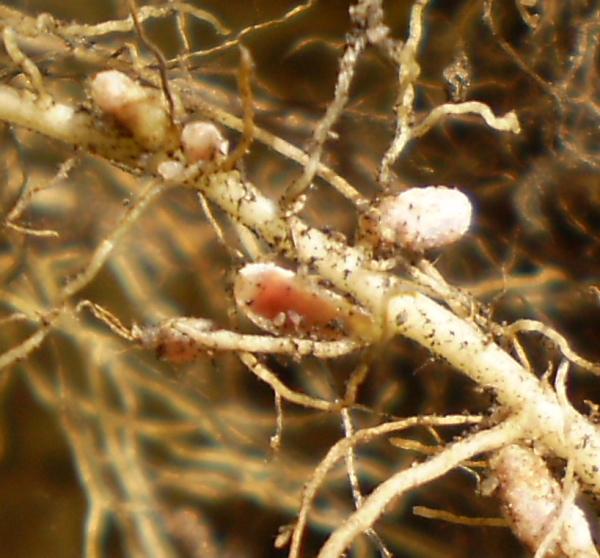Organisms of the genus Rhizobium are characterized by polymorphism, i.e., the forms of bacteria are very diverse. These microorganisms can be mobile and immobile, have the shape of a coccus or rod, filamentous, oval. Most often, young prokaryotes have a rod-shaped shape, which changes with growth and age due to the accumulation of nutrients and immobilization. In its microorganism goes through several stages, which can be judged by its appearance. Initially, this is the form of a stick, then the so-called "girdled stick" (has belts with fatty inclusions) and, finally, bacteriod - a large immobile cell of irregular shape.
Nodule bacteria are specific, i.e. they are able to settle only in

certain group or species of plants. This property in microorganisms was formed genetically. Also important is efficiency - the ability to accumulate atmospheric nitrogen in sufficient quantities for its host plant. This property is not constant and may change due to habitat conditions.
There is no consensus on how nodule bacteria enter the root, but there are a number of hypotheses about the mechanism of their penetration. Thus, some scientists believe that prokaryotes penetrate into the root through damage to its tissues, while others speak of penetration through the root hairs. There is also an auxin hypothesis - an assumption about satellite cells that help bacteria invade root cells.

The very same introduction occurs in two phases: first - infection of the root hairs, then - the formation of nodules. The duration of the phases is different and depends on the specific plant species.
The importance of bacteria that are capable of fixing nitrogen is great for agriculture, since it is these organisms that can increase crop yields. From these microorganisms, they prepare which is used to treat legume seeds, which contributes to a more rapid infection of the roots. Various species, when planted, even on poor soils, do not require additional application of nitrogen fertilizers. Thus, 1 hectare of legumes "in work" with nodule bacteria converts 100-400 kg of nitrogen into a bound state during the year.
Thus, nodule bacteria are symbiotic organisms that are very important not only in the life of a plant, but also
